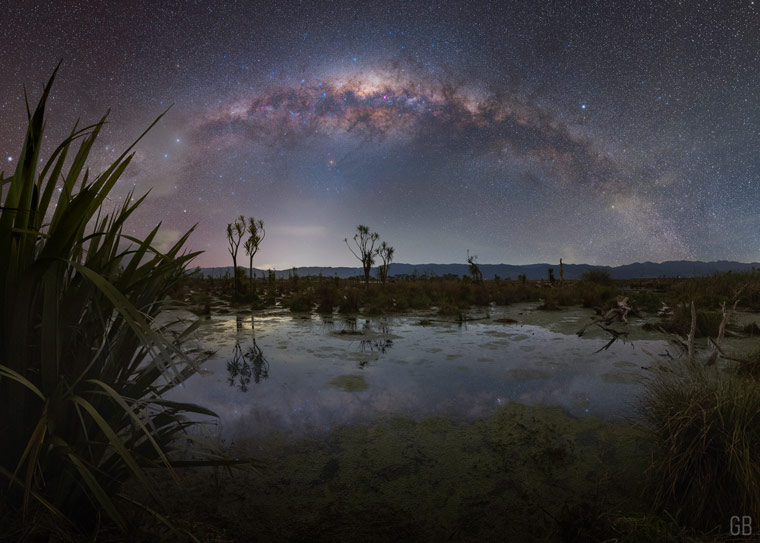Wairarapa Moana is the largest wetland area in the lower North Island, and is the subject of a significant conservation effort to restore its naturally rich biodiversity. This image shows the Milky Way framing native cabbage trees (tī kōuka) and flax (harakeke) in the heart of the Moana. Photo credit, Glen Butler.
SOUTH WAIRARAPA and CARTERTON DISTRICTS, New Zealand – The Districts of South Wairarapa and Carterton of New Zealand’s North Island named Wairarapa Dark Sky Reserve, the newest International Dark Sky Reserve certified by the International Dark-Sky Association (IDA).
After five years of hard work by a small group of volunteers, the South Wairarapa and Carterton Districts have been formally certified as an International Dark Sky Reserve to preserve the region’s pristine night skies for future generations. With broad community support, the Wairarapa Dark Sky Association (WDSA) set out to ensure the region’s dark skies would not degrade, a problem that besets some 80 percent of people worldwide.
“We are thrilled to be granted kaitiaki (guardianship) status for our sparkling dark skies by the International body, the International Dark-Sky Association,” Wairarapa Dark Sky Association chair Viv Napier said. “We know there are massive environmental and social benefits from reducing the scatter of light at night, and we want to thank the communities of Martinborough, Featherston, Greytown, and Carterton for their support,” she added.
“The efforts taken by the Wairarapa Dark Sky Reserve are already influencing and inspiring advocates across New Zealand,” noted Ashley Wilson, IDA’s Director of Conservation. “This robust and successful nomination will pave the way for new certifications to arise in the near future, providing additional protections for the natural and cultural resource that is the dark sky.”
IDA has granted the Dark Sky Reserve status to just 20 other places worldwide by the IDA. Aoraki-McKenzie in the South Island was the first International Dark Sky Reserve in New Zealand, certified in 2012. Support from community groups, including local iwi and astronomical societies in Wairarapa and Wellington, as well as the region’s four local councils – South Wairarapa, Carterton, Masterton, and Greater Wellington Regional Council – was integral to the success of this certification.
The combined South Wairarapa and Carterton districts of the new Wairarapa Dark Sky Reserve cover an area of 3,665 square kilometers. The site is surrounded by enduring protection from significant light encroachment, with the Pacific Ocean to the east and south and the Remutaka and Tararua forest ranges to the west. WDSA already has plans to expand the reserve area to include northern Wairarapa’s Masterton district, which will encompass some 5,895 square kilometers. WDSA wants to thank all its supporters for staying the distance on its five-year journey, particularly sponsors who host night light-recording TESS meters, which provide ongoing records of darkness levels across the region. These meters help to confirm the consistently high quality of the dark skies and ensure no new light is spilling into the Reserve.
Wairarapa Dark Sky Reserve now joins more than 200 Places in the International Dark Sky Places Program worldwide that have demonstrated robust community support for dark sky advocacy and strive to protect the night from light pollution. You can find more information about WDSA at https://wairarapadarksky.nz/.
Tagged with dark sky, lightED